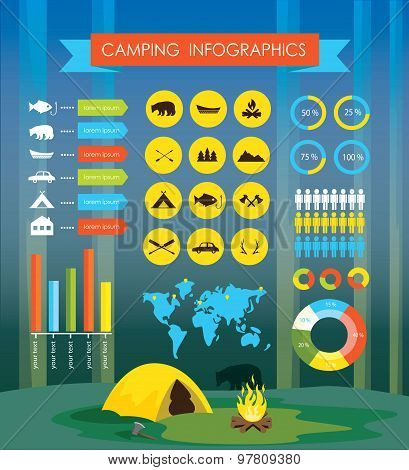The rain fly is a necessary part of your tent, shielding it from rain, wind and severe sunshine. Whether you pick a spacious multi-room tent or light-weight backpacking tent, you'll locate that a quality rainfly boosts your outdoor experiences.
Try to find a rainfly with long lasting materials and a high waterproof rating. Take into consideration the weight and packability of a rainfly when picking it for backpacking trips.
Sleeping Outdoor tents
A rainfly gives additional protection for your tent from unanticipated showers. Its style deflects rainfall and snow and assists avoid water from pooling on the top of your outdoor tents. This can trigger the material to sag and cavern, causing leaks.
Modern rainfly fabrics consist of polyurethane or silicone finishings to provide phenomenal waterproofing. Several additionally include sealed seams to avoid water from dripping through sewing. Some even have reflective patches to aid you find your tent in low-light problems.
Select a rainfly that mirrors the climate and camping problems you run into most regularly. As an example, desert campers require a rainfall fly that obstructs wind and UV rays. Backpackers ought to take into consideration ultralight rainfall flies to minimize pack weight without endangering protection. Look for flexible add-on factors that enable you to alter the tension on the fly to make sure that it is tight and positioned appropriately to stop leakages. A well-positioned rainfly can additionally control temperature level and lower condensation inside the outdoor tents.
Tarpaulin
Tarps are flexible pieces of camping equipment, and a tarpaulin sanctuary can be among the most comfortable alternatives for camp. Along with being able to be configured in unlimited methods, tarpaulins additionally tend to need much less equipment than camping tents and are much lighter in weight.
A significant benefit to tarpaulin sanctuaries is that they allow for ample ventilation. While this can be a disadvantage for some campers, who may favor to have an extra encased room, it is an important factor in keeping residents from overheating and reducing the buildup of condensation that could compromise the fabric.
As with other setups, when setting up a tarp shelter, ensure the ridge line is set up at an angle to help direct rain and snow away from the shelter. A good ridgeline can also keep wind from blowing the tarpaulin around. Make certain the tarpaulin is safeguarded effectively with ideal linking methods, such as a prusik knot (or moving knot), at heights that create enough head area and are not a tripping risk, and slope the tarpaulin properly for drain.
Protection
A rainfly is among the most vital items of outdoor camping devices to cause any trip. It shields your tent from weather that can rapidly transform, enabling you to stay comfy and enjoy your wild adventures.
Modern rainfall fly designs provide greater than simply waterproof security. Some have integrated solar panels to assist you maintain charged on the go, while backcountry camping others have flexible vents for air movement to mitigate condensation buildup. Selecting a rainfly that fits your demands and preferences is crucial for the general experience.
Seek lightweight fabrics, such as nylon or polyester, and polyurethane finishes to increase water resistance. Additionally think about the rainfly's head hydrostatic pressure score, which aids you evaluate its capability to stand up to rains and wind. Remember that rainfall flies commonly have to be cleaned after each use, because dirt can endure the waterproof layer. It's ideal to tidy and store it in a great, completely dry area to stay clear of mold and mildew and mold.
Sanctuary
A rainfly is an essential piece of equipment for your hammock, protecting you from the components and ensuring that you can sleep comfortably. When selecting a rainfly, take into consideration the environment and problems in which you'll be outdoor camping. For instance, tropical environments may call for a rainfall fly that has high moisture and UV security. Other considerations consist of textile kind and weight. Search for options that are lightweight and made from long lasting products that withstand abrasions and discolorations.
If you don't have a rain fly, you can develop a makeshift shelter utilizing a tarpaulin. Nevertheless, it's best to establish your rainfall protection initially prior to putting up the remainder of your outdoor tents. This guarantees that you can swiftly and easily get in and out of your hammock in case of a sudden storm or modification in climate. Likewise, see to it that your rain fly is appropriately secured to avoid waving in the wind. Remember that rain flies and pest nets must be cleaned frequently to stop mud, mildew and mold from accumulating over time.
